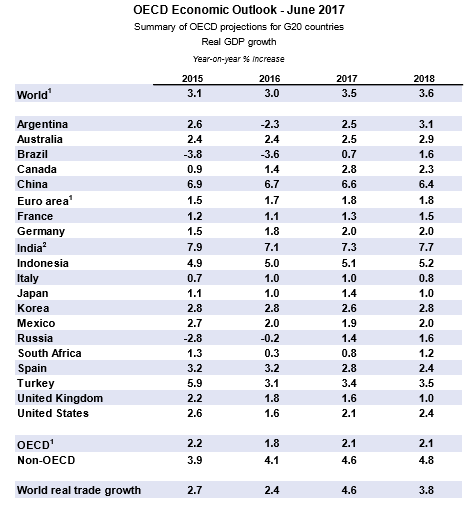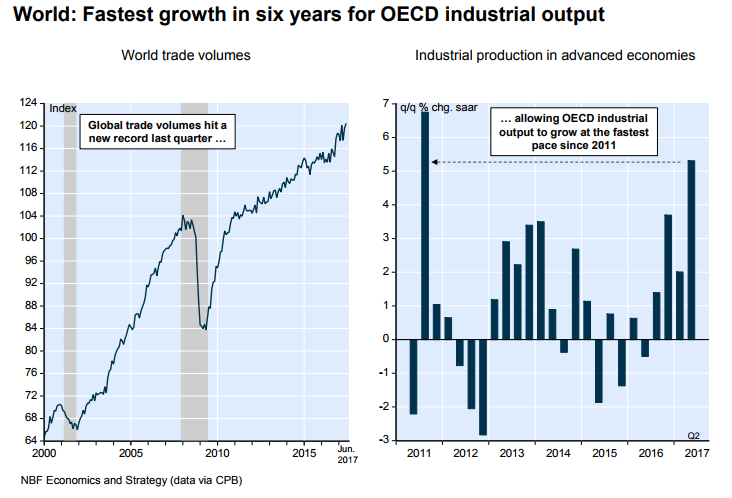The World Economy Is Growing At Its Fastest Pace In Years
After a particularly dismal performance in 2016, the advanced economies are starting to bounce back this year. World trade is also rebounding and industrial production in the advanced economies is revving up based on purchasing managers surveys for the U.S., Japan and the Euro Area.
Virtually all forecasting agencies are projecting modestly stronger world growth in 2017 and 2018 than in the recent past.
For example, a recent OECD report concluded that the volume of world trade will expand by 4.6% in 2017 and 3.8% in 2018, considerably faster than the extremely slow 2.7% and 2.4% growth rates recorded in 2015 and 2016.
The world’s economy is also projected to moderately step up with 3.5% real GDP growth this year and 3.6% in 2018, although the OECD acknowledges that this pace is still too slow to overcome the legacy of problems that emerged following the Great Recession.
In this slightly improved global environment, Canada’s economy is expected to grow faster than the American in both 2017 and 2018.
The Euro area economy is also projected to post a solid 1.8% expansion in 2017 and 2018, while Japan’s economy is projected to expand at a relatively stable rate this year and next.
China and India will likely continue to post relatively high growth rates in 2017 and 2018, though India is expected to record faster growth than China in both years. The phenomenon of India’s economy growing faster than China’s is relatively recent and became quite noticeable two years ago.
In an environment of slightly stronger commodity prices and expanded global trade, the emerging market countries are also expected to post improved economic performances over the next couple of years.
Unfortunately, political uncertainties and rigid structural impediments continue to hold back the emergence of a stronger and more typical world recovery.
Consequently, the balance of risks in these projections remains tilted to the downside, especially over the medium term.
The common structural problems facing the advanced economies are income inequality and low productivity growth, which tend to slow economic growth and offer poor prospects for standard of living improvements.


Disclosure: None.



